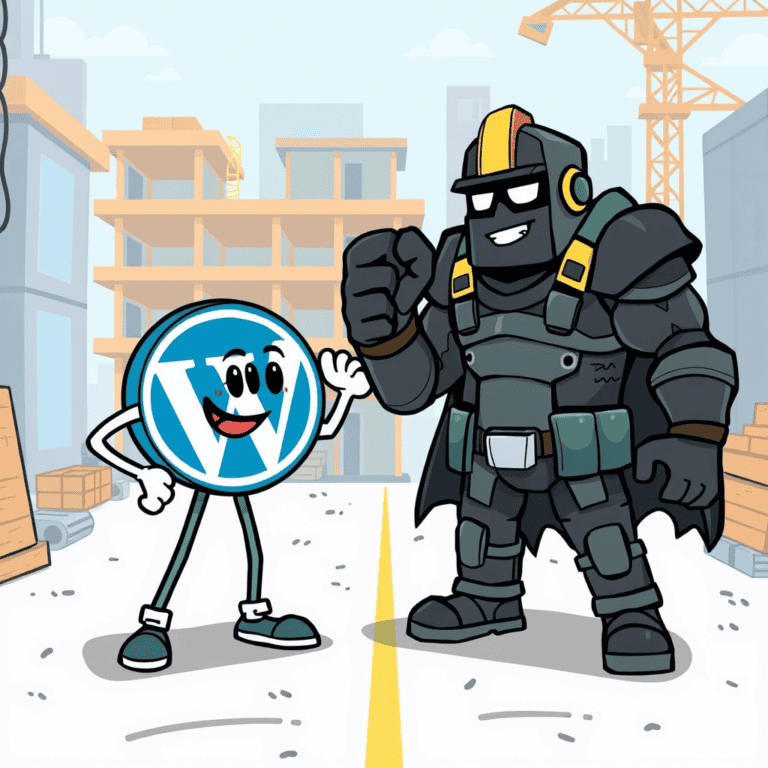
Cost, Control, and Customization: WordPress vs. Full-Stack Websites Compared
When it comes to building a website, one of the biggest decisions you’ll face is choosing between a WordPress site and a fully custom, full-stack coded website. Both options have their strengths and weaknesses, and the right choice depends on your specific needs, budget, and technical expertise. In this blog, we’ll break down the key factors of cost, control, and customization to help you decide which approach is best for your project.
1. Cost: Which is More Budget-Friendly?
WordPress: Affordable and Scalable
WordPress is often the more cost-effective option, especially for small to medium-sized projects. Here’s why:
Low Initial Costs: WordPress itself is free, and you can get started with a basic website using affordable hosting plans and free themes.
Plugins and Themes: While many plugins and themes are free, premium options are available for advanced functionality, often at a fraction of the cost of custom development.
Maintenance Costs: WordPress websites are relatively easy to maintain, especially with managed hosting services that handle updates and security.
However, costs can add up if you need premium plugins, custom themes, or ongoing developer support.
Full-Stack Development: Higher Upfront Investment
Building a full-stack website from scratch requires a larger upfront investment:
Development Costs: Hiring a full-stack developer or team to design, code, and deploy a custom website can be expensive.
Ongoing Maintenance: Custom websites require regular updates, bug fixes, and security patches, which can add to the long-term costs.
Scalability: While full-stack websites can be highly scalable, scaling them often requires additional development work, increasing costs.
Verdict: If you’re on a tight budget, WordPress is the more affordable option. However, if you have the resources and need a highly tailored solution, a full-stack website might be worth the investment.
2. Control: Who Holds the Reins?
WordPress: Limited Control with Ease of Use
WordPress is designed to be user-friendly, but this comes with some trade-offs in terms of control:
Pre-Built Framework: WordPress operates within a predefined structure, which can limit how much you can modify the core functionality.
Dependency on Plugins: While plugins extend functionality, relying on third-party tools can sometimes lead to compatibility issues or security vulnerabilities.
Hosting Restrictions: If you’re using a managed WordPress host, you may have limited access to server configurations.
That said, WordPress still offers a high degree of control for non-developers, especially with page builders like Elementor or Divi.
Full-Stack Development: Complete Control
With a full-stack website, you have full control over every aspect of your site:
Custom Code: You can build exactly what you need without being constrained by pre-built themes or plugins.
Server-Side Control: You have complete access to server configurations, databases, and backend logic.
Flexibility: You can integrate any third-party tools or APIs and tailor the website to your exact specifications.
The downside? This level of control requires significant technical expertise or a skilled development team.
Verdict: If you need complete control over your website and have the technical know-how (or budget to hire developers), full-stack development is the way to go. For most users, WordPress offers sufficient control with much less complexity.
3. Customization: How Unique Can Your Website Be?
WordPress: Customizable Within Limits
WordPress is highly customizable for a pre-built platform:
Themes and Plugins: Thousands of themes and plugins allow you to customize the look and functionality of your site.
Custom Themes and Plugins: If you have coding skills or hire a developer, you can create custom themes and plugins to tailor your site further.
Page Builders: Tools like Elementor and WPBakery make it easy to design custom layouts without coding.
However, WordPress websites can start to look similar if you rely on popular themes, and deeply custom functionality may require significant development work.
Full-Stack Development: Endless Possibilities
With full-stack development, the sky’s the limit when it comes to customization:
Unique Design: Your website can be designed from scratch to match your exact vision, without any limitations imposed by pre-built themes.
Tailored Functionality: You can build custom features, workflows, and integrations that are impossible or cumbersome to achieve with WordPress.
Optimized Performance: Full-stack websites can be fine-tuned for speed, security, and scalability, as you’re not relying on bloated plugins or themes.
The trade-off? Custom development takes time, expertise, and resources.
Verdict: If you need a truly unique website with bespoke functionality, full-stack development is the better choice. For most users, WordPress offers more than enough customization options.
Conclusion: Which Should You Choose?
The decision between WordPress and full-stack development ultimately comes down to your specific needs:
Choose WordPress if:
You’re on a budget.
You need a website quickly and don’t have advanced technical skills.
You want a user-friendly platform with plenty of customization options.
Choose Full-Stack Development if:
You need a completely unique website with custom functionality.
You have the budget and technical expertise (or access to a development team).
You want full control over every aspect of your site.
Both WordPress and full-stack websites have their place in the digital landscape. By weighing the factors of cost, control, and customization, you can make an informed decision that aligns with your goals and resources.
Source: MasterJAC Web Hosting Services
